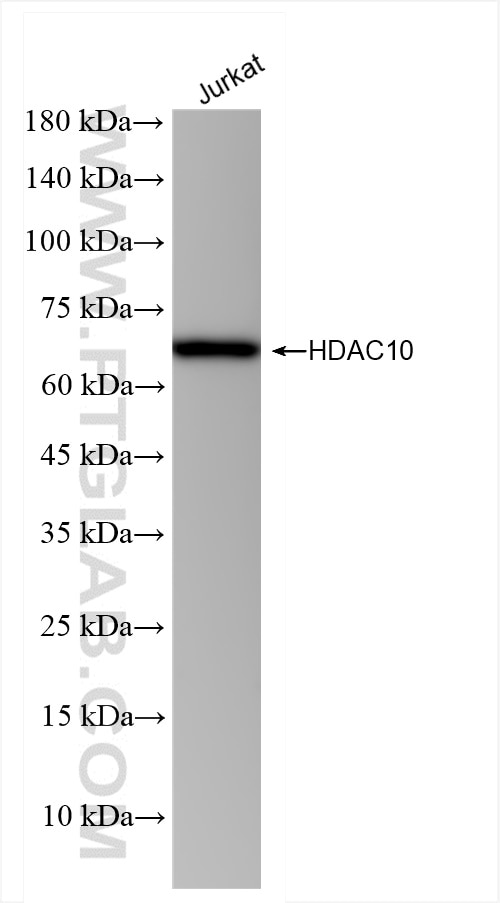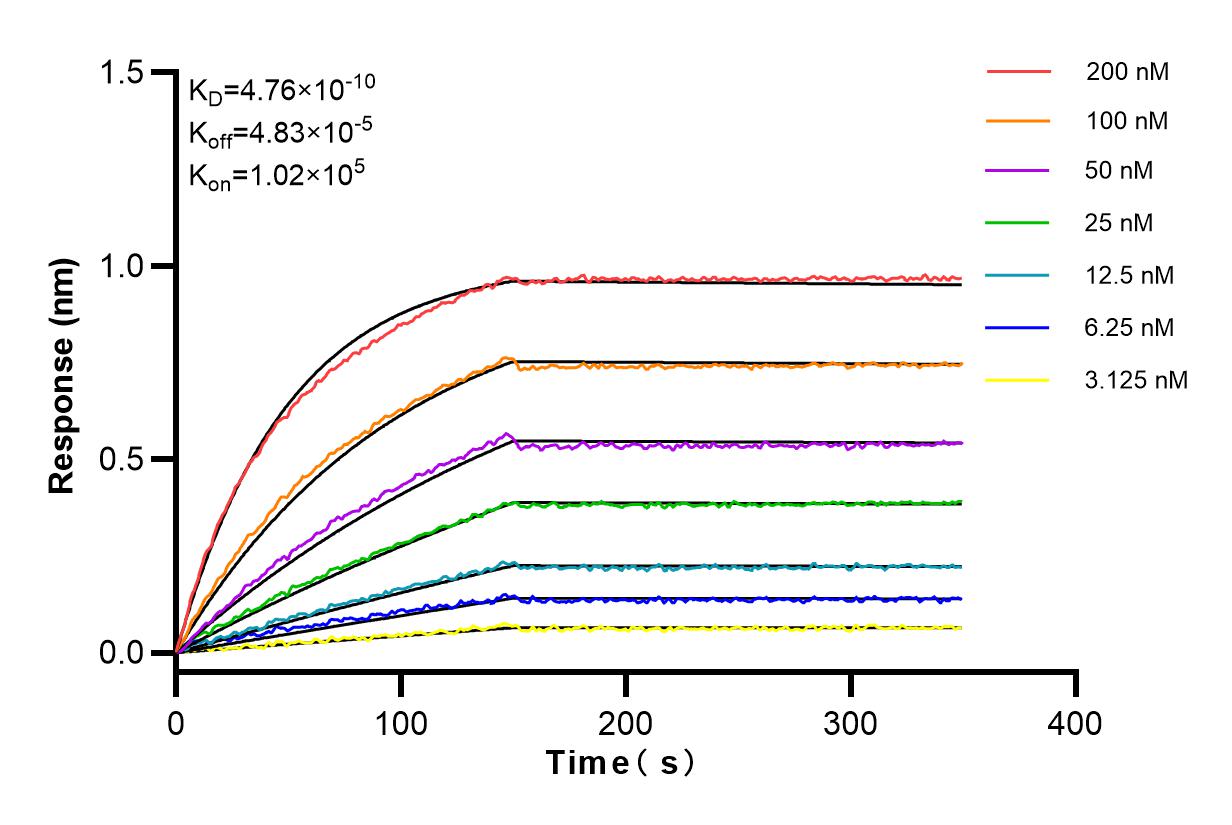Anticorps Recombinant de lapin anti-HDAC10
HDAC10 Recombinant Antibody for WB, ELISA
Hôte / Isotype
Lapin / IgG
Réactivité testée
Humain
Applications
WB, ELISA
Conjugaison
Non conjugué
CloneNo.
240877E1
N° de cat : 83788-4-RR
Synonymes
Galerie de données de validation
Applications testées
| Résultats positifs en WB | cellules Jurkat, |
Dilution recommandée
| Application | Dilution |
|---|---|
| Western Blot (WB) | WB : 1:5000-1:50000 |
| It is recommended that this reagent should be titrated in each testing system to obtain optimal results. | |
| Sample-dependent, check data in validation data gallery | |
Informations sur le produit
83788-4-RR cible HDAC10 dans les applications de WB, ELISA et montre une réactivité avec des échantillons Humain
| Réactivité | Humain |
| Hôte / Isotype | Lapin / IgG |
| Clonalité | Recombinant |
| Type | Anticorps |
| Immunogène | HDAC10 Protéine recombinante Ag18851 |
| Nom complet | histone deacetylase 10 |
| Masse moléculaire calculée | 669 aa, 71 kDa |
| Poids moléculaire observé | 70-75 kDa |
| Numéro d’acquisition GenBank | BC125083 |
| Symbole du gène | HDAC10 |
| Identification du gène (NCBI) | 83933 |
| Conjugaison | Non conjugué |
| Forme | Liquide |
| Méthode de purification | Protein A purfication |
| Tampon de stockage | PBS with 0.02% sodium azide and 50% glycerol |
| Conditions de stockage | Stocker à -20°C. Stable pendant un an après l'expédition. L'aliquotage n'est pas nécessaire pour le stockage à -20oC Les 20ul contiennent 0,1% de BSA. |
Informations générales
HDAC10, also named as Histone deacetylase 10, is a 669 amino acid protein, which is widely expressed with high levels in liver and kidney. HDAC10, which belongs to the class IIb subfamily, has an active deacetylase domain (DAC) and a catalytically inactive leucine-rich domain (LRD). HDAC10 is determined that it plays a role in homologous recombination, promotes autophagy and survival in neuroblastoma cells, suppresses cervical cancer metastasis and facilitates the cell cycle.
Protocole
| Product Specific Protocols | |
|---|---|
| WB protocol for HDAC10 antibody 83788-4-RR | Download protocol |
| Standard Protocols | |
|---|---|
| Click here to view our Standard Protocols |




